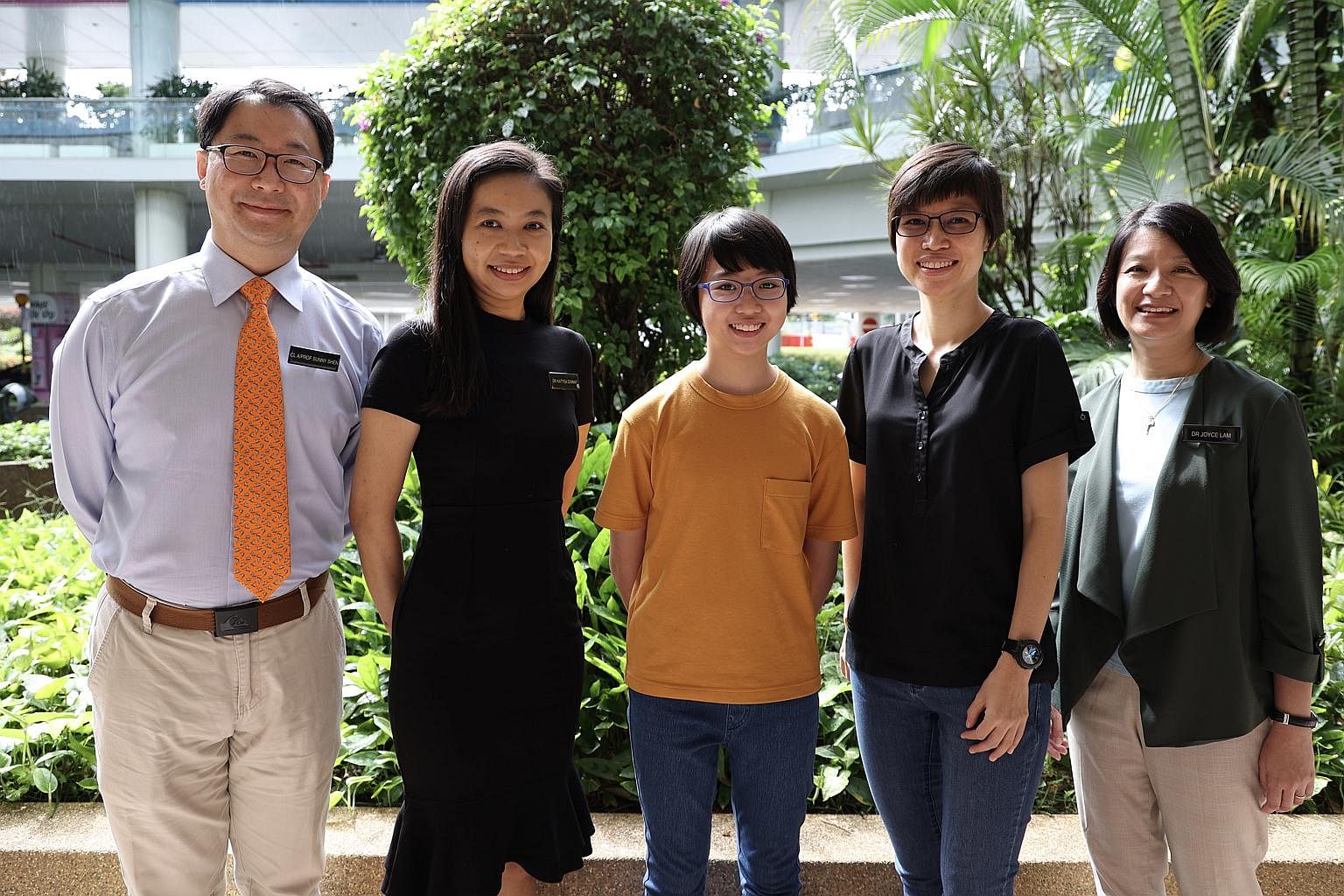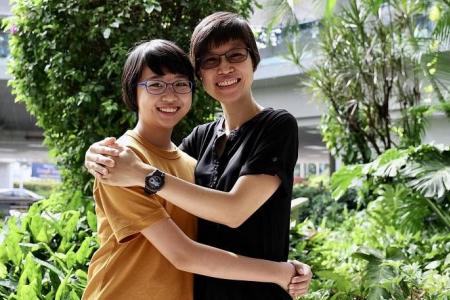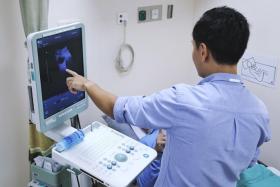Girl, 11, first kid here with eye tumour to get invasive radiation therapy
When 11-year old Kristal Yong was diagnosed with a rare and aggressive cancer of the muscle in her right eye in late 2020, her parents said yes to the best available radiation therapy that the doctors proposed.
Called interstitial brachytherapy, the treatment allows radioactive material to be delivered directly inside a tumour or very near it through a catheter or similar device. Surrounding healthy tissues are less affected by radiation than with conventional external beam radiation, a non-invasive method whereby a machine delivers the radiation to a particular part of the body.
However, in Singapore, brachytherapy had not been done on the eye before, and Kristal would be only the second child to have brachytherapy at all.
Kristal completed six months of cancer treatment, including chemotherapy, in April last year. She is the first child cancer patient with orbital rhabdomyosarcoma in Singapore and South-east Asia to receive interstitial brachytherapy.
At a media briefing on Tuesday (June 21), Associate Professor Joyce Lam Ching Mei, a senior consultant at the haematology/oncology service at KK Women's and Children's Hospital (KKH), said she and the team working on Kristal's case proposed interstitial brachytherapy because they wanted to preserve her eyesight.
This method would also minimise the risk of her developing a second cancer due to the exposure of normal tissues to low dose radiation, said another team member, Clinical Assistant Professor Kiattisa Sommat, a senior consultant in the department of breast and gynaecology at the National Cancer Centre Singapore's radiation oncology division.
The first child to have brachytherapy in Singapore was an 11-month-old Vietnamese boy, who came here for treatment for a prostate tumour in 2020. Both children are doing well today, with no active cancer cells detected, Prof Lam said.
During her brachytherapy treatment in February last year, Kristal was confined to a hospital bed with six plastic catheters inserted into her right eye. For a week, radiation doses were delivered in the morning and afternoon, for 10 minutes each time.
Prof Kiattisa said the multidisciplinary team, which also included Clinical Associate Professor Sunny Shen, a senior consultant and head of the Department of Oculoplastic at the Singapore National Eye Centre, consulted an Italian expert on the treatment. They did a lot of dry runs and practised inserting the catheters on a few fruit, including a pomelo, to ensure that they got the best route of entry and placement of the device for instance, while minimising potential injury to the eye.
Prof Shen said they were also concerned about the effects of the treatment. "The lens inside the eye is very sensitive to radiotherapy and such treatment can cause premature cataracts," he said. Fortunately, Kristal did not develop such a complication.
Only a few centres in the world have the capability to use the interstitial brachytherapy method on paediatric tumours, though it has been used here to treat gynaecological and prostate cancers in adults for about four or five years, said Prof Kiattisa.
This is not only because it is challenging, but also because of the rarity of childhood cancers. KKH, which handles around 80 per cent of such cases here, sees about 100 cases a year.

Prof Kiattisa said the cost of interstitial brachytherapy is highly dependent on the site of treatment and the level of technical expertise required.
Kristal's mother, Madam Lim Hwee Ping, 43, a stay-at-home mother, said she first discovered what seemed to be a small "pimple" near Kristal's eye. She thought it was linked to puberty but the pimple got bigger, sparking alarm.
She said she and her husband deliberated over their options and decided to put their trust in the doctors.
"Our main concern is, is it safe for her? Second, is the team confident enough to do it because we don't her to be a guinea pig? An experiment can fail... but she had only that one chance," said Madam Lim, who also has an eight-year-old son.
"We just want her to have the best chance in life because she has a long runway and brachytherapy is the best available option."
Madam Lim said she told Prof Kiattisa to tell the team not to worry. "If it turns out well, thank you very much," she said.
"If it does not turn out the way that we wanted, it's okay, we will not blame you, just take it as a learning experience. For future patients, you will do better and Kristal will lay the path for future medical treatments."
Get The New Paper on your phone with the free TNP app. Download from the Apple App Store or Google Play Store now


